#The Handbook For Magick: Year One
Text
Glad's Book List
I wrote a post recently about my history (normally I'd link it but I don't want to be narcissistic), and realized that I've read a fair few occult books over the years. So here's the list; I'll keep updating it as I find more books in my various libraries and book stashes.
Quick note before getting into this list--not everything I've read will make it. Just the stuff I read and recommend others parse through. For example, I have intentionally omitted my studies in Kabbalah to discourage others from unintentionally appropriating.
But by "parse through", I truly mean that. My path has meandered through several schools of thought and wandered into appropriative territory at times (I constantly strive to correct any appropriation in my practice that gets brought to my attention). Maybe about 20% of each book makes it into my current path.
Eh, so it wasn't so quick of a note. Here's the list:
CEREMONIAL MAGIC
Aleister Crowley, Book 4
Chic and Sandra Cicero, Essential Golden Dawn
Donald Kraig, Modern Magick
Henry Agrippa, Three Books of Occult Philosophy
Israel Regardie, The Golden Dawn
Lon Milo DuQuette, Llewellyn's Complete Book of Ceremonial Magick
Samuel Mathers, The Book of Abramelin
Stephen Skinner and David Rankine, Key of Solomon
CHAOS MAGIC
Archtraitor Bluefluke, The Psychonaut Field Manual
Jan Fries, Visual Magick
Lon Milo DuQuette, Low Magick
Peter Carroll, Liber Null & Psychonaut; Liber Kaos
Phil Hine, Condensed Chaos; Prime Chaos
Richard Metzger, Book of Lies
Robert Wilson, Prometheus Rising
CRYSTALS
Cassandra Eason, The Complete Crystal Handbook
Karen Frazier, An Introduction to Crystal Grids
Robert Simmons and Naisha Ahsian, The Book of Stones
Scott Cunningham, Encyclopedia of Crystal, Gem, and Metal Magic
Yulia van Doren, Crystals
DIVINATION
A.E. Waite, Pictorial Key to the Tarot
Brigit Esselmont, Everyday Tarot; The Ultimate Guide to Tarot Meanings
Chic and Sandra Cicero, Golden Dawn Ritual Tarot
Diana Paxson, Taking Up the Runes
Lon Milo DuQuette, Understanding Crowley's Thoth Tarot
Melissa Cynova, Kitchen Table Tarot
Rachel Pollack, Seventy-Eight Degrees of Wisdom
DREAMS
Carl Jung, Dreams; The Red Book
DRUIDRY
Dana O'Driscoll, Sacred Actions
John Greer, The Druidry Handbook; The Druid Magic Handbook
Philip Carr-Gomm, The Druid Way
Ross Nichols, The Book of Druidry
HELLENISM
David Mierzwicki, Hellenismos
Hesiod, Theogeny
Homer, Iliad; Odyssey
John Opsopaus, The Oracles of Apollo
LABRYS Community, Hellenic Polytheism
Orpheus, The Orphic Hymns
HERBS
Nicholas Culpeper, Culpeper's Complete Herbal
Scott Cunningham, Encyclopedia of Magical Herbs
HERMETICISM
Hermes Trismegistus, Corpus Hermeticum; The Emerald Tablet
Three Initiates, The Kybalion
GENERAL MAGIC
Aleister Crowley, Magic in Theory and Practice
Christopher Dell, The Occult, Witchcraft and Magic
Manly Hall, Secret Teachings of All Ages
Owen Davies, Oxford Illustrated History of Witchcraft and Magic
Rock Point Publishing, Spellcraft
Sarah Lyons, How to Study Magic
MEDITATION
Diana Paxson, Trance Portation
Stephen Bodian, Meditation for Dummies
PAGANISM
Herman Slater, A Book of Pagan Rituals
Margot Adler, Drawing Down the Moon
Ronald Hutton, Triumph of the Moon
WICCA
Doreen Valiente, Witchcraft for Tomorrow
Gerald Gardner, The Meaning of Witchcraft; Witchcraft Today
Janet and Stewart Farrar, A Witches' Bible
Raymond Buckland, Buckland's Complete Book of Witchcraft; The Tree; Wicca for One
Scott Cunningham, Wicca; Living Wicca
Starhawk, The Spiral Dance
Thea Sabin, Wicca for Beginners
Thorn Mooney, Traditional Wicca
9 notes
·
View notes
Text
Ghoul Kit 101: a Helpful Guide
So you've decided to summon a ghoul kit, but you have no idea what you're getting into.
Don't be alarmed!
Here's some important tips to know before starting your unholy and inhuman family:
Fire kits may randomly combust when agitated or irritable. It is a good idea to have a fire blanket or extinguisher at hand at all times. Thickly insulated clothing and a reliable ice-maker should be purchased prior to summoning in order to train your kit on the importance of internal temperature regulation and self control. When raising a fire kit it is always a good idea to refer to the abbey's handbook for the emergency line and to keep in mind where your closest fire alarm is!
Water kits tend to be the best behaved kits, but will expel an excessive amount of tears and drool when overly excited or upset. Consider investing in a good quality, everyday bib for your little one. It is also imperative that your water kit soaks periodically in a water bath for up to six hours a week— excessive soaking may oversaturate the skin and lead to what is best described as "leaking".
Earth kits are curious and require close attention beginning around three months post-summon. It is important to provide your kit with a hardy plant that requires little tending and can survive in even the worst of shape (choose wisely as their first plant could potentially become emotionally bonded and travel with them for the first couple years post-summon). Secondly, earth kits require intense sunning throughout their first year and it is important to follow up with an organic lotion to rehydrate the skin. Lastly, refrain from allowing them to eat bugs; specifically butterflies and moths, which can temporarily affect the pigmentation of their skin for up to seven days. A muzzle may be a temporary solution for this almost unavoidable phenomenon.
Air kits may randomly levitate due to the unique density of their bones. Specially made weighted shoes and kit-belts can be purchased so to ensure your kit never floats away. (Pro Tip: Tying a yarn to your kit while engaging in outside time is always a great idea!) Your kits hair may stand on end for the first month post-summon. Specially made oils can be borrowed from the greenhouse for this reason. (Please call the abbey emergency line immediately if your kit floats to the ceiling of the chapel or any high ceiling. We have special equipment to handle situations such as these.)
Quintessence kits grow twice as fast compared to the average weight of any other elemental kit and are born with an excess of dark magic, causing their skin to appear iridescent and heal at an accelerated rate. Be sure to wrap and pad harsh corners and hide your valuable objects from their reach! They're essentially walking wrecking balls beginning at 3 months post-summon and are susceptible to falling.
Accidentally summon a multi-elemental ghoul kit? Don't panic! Refer to the previous articles concerning the elemental make-up of your kit. It is important to note that some elements may appear or disappear as your kit ages, and that the strength of any observed magick should be observed with great attention and care. Specialty packages can be purchased for multi-elemental kits through the abbey nursery that include everything you may need as your kit ages and evolves— from a modified fire blanket to a one-size-fits-all weighted belt!
Good luck and Happy Summoning!
-- talk to me about some ghoul kit headcanons!!
#nameless ghouls#nameless ghoul#ghouls#shitghosting#the band ghost#ghost#ghost bc#ghost band#p1nk dab#ghost headcanons#ghost headcanon#the band ghost headcanons#the band ghost headcanon
117 notes
·
View notes
Text
The Magic Of Magnolias || Correspondences

What is a Magnolia Tree?

Magnolia trees are a genus of tree that contain about 210 different flowering species of plants. It is named after French botanist Pierre Magnol. One thing that I find absolutely fascinating about Magnolia trees is that they are ancient! Fossilized specimens of one type of Magnolia have been found dating to 20 million years ago! Magnolia trees were around before the evolution of bees and it is theorized that the Magnolia tree adapted to allow for pollination by beetles because of this! Magnolias are spreading, evergreen, or deciduous trees or shrubs. They have large fragrant flowers that can be bowl-shaped or star-shaped. The flowers also come in shades of white, pink, purple, green, or yellow. In deciduous species, the blooms often appear before the leaves in Spring.
I don’t quite know what species of Magnolia they planted in my yard when they built the house, but they haven’t flowered yet! I am definitely excited to see the color and shape of the flowers when they do bloom and blossom.
The flowers of many species are considered edible. In parts of England, the petals of M. grandiflora are pickled and used as a spicy condiment. In some Asian cuisines, the buds are pickled and used to flavor rice and scent tea. In Japan, the young leaves and flower buds of Magnolia hypoleuca are broiled and eaten as a vegetable. Older leaves are made into a powder and used as seasoning; dried, whole leaves are placed on a charcoal brazier and filled with miso, leeks, daikon, and shiitake, and broiled. There is a type of miso which is seasoned with magnolia, hoba miso.
Magnolia in Folklore
In Plant Lore, Legends, and Lyrics, by Richard Folkard, the author states that Magnolia belongs to a group of plants that are noxious, poisonous, and deadly. The author said they are a Plant of the Devil and should be treated as such.
The Magnolia grandiflora is one of those shrubs the baneful emanations from which have procured for them an ill name. It is a native of Carolina, and has large white blossoms of powerful fragrance. When wafted to a distance upon the air, the scent is delicious, but when inhaled in the immediate neighbourhood of a group of Magnolias in flower, it becomes overpowering. The Indians carefully avoid sleeping under a Magnolia in blossom, and it is stated that so powerful is the perfume of the flower, that a single blossom placed in a bedroom suffices to cause death in one night.
Using Magnolia Medicinally

According to WebMD, Magnolia plants have been used for a variety of ailments and issues. These include the following, though we have to keep in mind that there is usually a lack of scientific evidence and study to back up these claims.
Gingivitis
Anxiety
Dental Plaque
Menopausal Symptoms
Stress
Weight Loss
Common Cold
Depression
Diabetes
Digestion Problems
Facial Dark Spots
Headaches
High Cholesterol
Nasal Congestion
Runny Noses
Toothaches
WebMD does point out several safety concerns including ingesting Magnolia during pregnancy.
Taking magnolia flower bud by mouth is UNSAFE during pregnancy. There are reports that magnolia can cause the uterus to contract and that might cause a miscarriage. Not enough is known about the safety of using magnolia bark during pregnancy. Stay on the safe side and avoid use.
They also say that Magnolia can slow down the central nervous system, so it is best to avoid ingesting Magnolia before medical procedures.
Magnolia can slow down the central nervous system. There is a concern that it might slow down the nervous system too much when combined with anesthesia and other medications used during and after surgery. Magnolia might also slow blood clotting and cause bleeding during and after surgery. Stop using magnolia at least 2 weeks before a scheduled surgery.
Other Magickal Mentions of Magnolia Correspondences
According to The Herbal Alchemist’s Handbook: A Complete Guide to Magickal Herbs and How to Use Them by Karen Harrison and Arin Murphy-Hiscock, Magnolia is of the Earth element and corresponds with the planet Jupiter.
Placing magnolia flowers near the nuptial bed ensures fidelity, and when added to the bath, they attract honor and recognition. With its rulerships by the Element Earth and the Planet Jupiter, the energies of this dramatic and beautiful tree promote financial increase. After the flower petals have dried and fallen away, the resulting seed cone makes a wonderful aspergil for sprinkling ceremonial waters.
The Herbal Alchemist’s Handbook: A Complete Guide to Magickal Herbs and How to Use Them
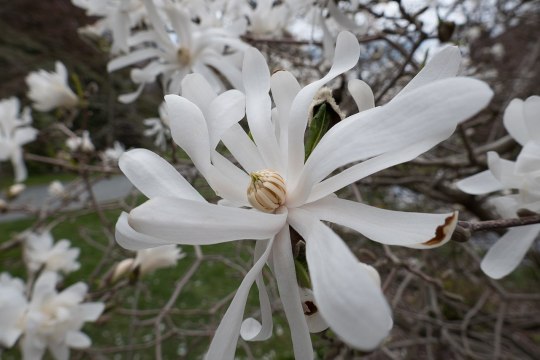
If we look at another source, one that came prior to the above book, Cunningham actually wrote that Magnolia corresponds with the element of Earth but with the planet Venus. He claims that the Magnolia tree, flower, and bark are used to promote fidelity.
Place some magnolia near or beneath the bed to maintain a faithful relationship.
Magnolia Correspondences
abundance
growth
fertility
self-reliance
calming people and situations
quieting others
banishing work
baneful magic (curses and hexes)
ancient wisdom
My Thoughts
For me personally, I tend to lean toward Magnolia being a plant ally to help promote wisdom and transformation. The flowers themselves are also bisexual meaning that it contains both pistils and stamens. It is a flower of androgyny! No one sex can be assigned to the flower and I believe that lends itself to inherent magickal quality. For Magnolia correspondences, I would personally use this little biological fact to correlate the Magnolia tree with abundance, growth, fertility, and self-reliance.
It is also interesting to note that it has anti-inflammatory properties physically. This also leads me to believe that using Magnolia in magick would aid in calming people and situations, even going so far as to quiet them altogether. It could potentially be used as an aid in banishing work or other baneful magick.
I am really glad I took the time to look into Magnolia trees and come up with some correspondences. I had no idea they were so fascinating and powerful. When my Magnolia trees bloom, I’ll be sure to share photos and let you know how they smell but I’ll be careful not to get too close!

Mandatory Disclaimer: Nothing written here is intended to treat, cure, or otherwise diagnose any medical ailment or illness. It is written for informative purposes only and is not medical advice. Please seek the advice of a professional before ingesting or otherwise consuming any herb, tree, or flower.
Sources and Further Reading
Wikipedia: https://en.wikipedia.org/wiki/Magnolia
WebMD – Magnolia Uses and Risks: https://www.webmd.com/vitamins-and-supplements/magnolia-uses-and-risks
WebMD – Magnolia Overview: https://www.webmd.com/vitamins/ai/ingredientmono-188/magnolia
Plant Lore, Legends, and Lyrics, by Richard Folkard: https://www.gutenberg.org/files/44638/44638-h/44638-h.htm
The Herbal Alchemist’s Handbook: A Complete Guide to Magickal Herbs and How to Use Them by Karen Harrison and Arin Murphy-Hiscock: https://www.scribd.com/book/450125352/The-Herbal-Alchemist-s-Handbook-A-Complete-Guide-to-Magickal-Herbs-and-How-to-Use-Them
Cunningham’s Encyclopedia of Magical Herbs: https://www.scribd.com/book/275211003/Cunningham-s-Encyclopedia-of-Magical-Herbs
0 notes
Photo

If getting exclusive ebooks, articles and downloads about hoodoo, conjure, rootwork and witchcraft sounds good to you, my Conjure Club is just the ticket! Soon we will have an interactive forum and access to Crossroads University's Magick Spell Bank at the new Crossroads University website, where Conjure Club will soon be housed. 🌟🌟🌟 How it Works: 1. One exclusive download every 9 days for one whole year 2. Special interactive forum for club members 3. One whole year membership 4. Bonus downloads. 5. Access to me for questions about any of the download topics 6. Discounts on products related to the downloads at creolemoon.com 6. Members receive a copy of the 400 page Anthology of Conjure at the very end of the year. 🌟🌟🌟 What kind of titles do you have? 95% of the ebooks and documents.you receive were authored by me. They are exclusive to Conjure Club and most are unavailable elsewhere. I write about things not often if ever published. I share how we do things in my generation (b. 1960). I also show how our older practices can be adapted to modern times. The other content consists of authorized excerpts from other authors of their books and public domain works that are related to hoodoo, conjure, rootwork, and witchcraft. 🌟🌟🌟 Some titles include:Formulas for Enhancing Dreams, Divination, Psychic Development and Prophecy,10 Old-style Hoodoo Powder Formulas, Astrological Formulary, Biblical Formulary, Spirit Spotlight: Al Anima Sola, The Use of Tide Water in Hoodoo and Conjure, Working with the Saints in the New Orleans Hoodoo Tradition, Working with St. Anthony of Padua, Hyssop: The Holy Herb and Its Uses, Folk Remedies of Southern Louisiana, Fabulous Spring Magic Money Hand, The Sacramentals of Saint Raymond, Crossroads Mama’s 105 Spiritual Baths for Every Occasion, Workin’ in da Boneyard, Gypsy Wisdom Spells, Charms and Folklore,Day of the Dead Handbook,Fortune Telling with Playing Cards,The Big Book of Mystical Chants and Prayers,New Orleans Gris Gris, Prayers to the Saints and Spirits,Herbal Tea Remedies 🌟🌟🌟Wont you join us? Visit creolemoon.com for details! #conjureclub #hoodoo #conjure witchcraft #rootwork #neworleansvoodoo (at Saint Johns, Arizona) https://www.instagram.com/p/Cgvg1lNutW-/?igshid=NGJjMDIxMWI=
0 notes
Text
2021 in books
Here is my 2021 reading wrap-up! The titles in italics are the ones I’m emphasizing as recommendations.

january:
1. “Christmas Days” by Jeanette Winterson
2. “Antigone” by Sophocles, translated by our Lord and Savior, Anne Carson
3. “The Undiscovered Islands” by Malachy Tallack
4. “The Handbook of Yoruba Religious Concepts” by Baba Ifa Karade
5. “Decisions and Dissents of Justice Ruth Bader Ginsberg” edited by Corey Lang Brettschneider
6. “The Soul of an Octopus” by Sy Montgomery
7. “World of Wonders” by Aimee Nezhukumatathil
8. “A Little Life” by Hanya Yanagihara
9. “Magickal Mermaids” by Flavia Kate Peters
february:
1. “Dear Juliet” edited by the Juliet Club
2. “Memorias de mis putas tristes” by Gabriel Garcia Marquez
3. “Midnight Sun” by Stephenie Meyer
4. “Infinite Country” by Patricia Engel (DNF)
5. “Anne of Green Gables” by L.M. Montgomery
6. “Twilight” by Stephenie Meyer (re-read)
7. “New Moon” by Stephenie Meyer (re-read)
8. “Entangled Life” by Merlin Sheldrake
march:
1. “The Dumb House” by John Burnside (TW)
2. “Hope Never Dies” by Andrew Shaffer
april:
1. “150 Glimpses of the Beatles” by Craig Brown
2. “The Passion” by Jeanette Winterson
3. “The Satanic Bible” by Anton Szandor LaVey
4. “A Coney Island of the Mind” by Lawrence Ferlinghetti
5. “The Final Revival of Opal and Nev” by Dawnie Walton
6. “Leave the World Behind” by Rumaan Alann
may:
1. “The Invention of a Murder” by Judith Flanders
2. “A History of the World in 6 Glasses” by Tom Standage
3. “Ghost Wall” by Sarah Moss
4. “God is Not One” by Stephen R. Prothero (DNF)
5. “Written on the Body” by Jeanette Winterson
6. “Loki: Agent of Asgard″ by Al Ewing (re-read)
7. “Loki: Agent of Asgard #2″ by Al Ewing (re-read)
8. “Poesia de Amor” by Pablo Neruda
9. “Modern Greek Poetry” edited by Kimon Friar
10. “Of Blood and Magic” by Shayne Leighton
11. “In Focus Reiki: Your Personal Guide” by Des Hynes
12. “Beneath the Moon” by Yoshi Yoshitani
13. “Tales of a Korean Grandmother” by Frances Carpenter
14. “The Unbearable Lightness of Being” by Milan Kundera
15. “Mercy, Unbound” by Kim Antieau
june:
1. “Barbarian Days: A Surfing Life” by William Finnegan
2. “The Falling in Love Montage” by Ciara Smyth
3. “Butterflies of North America” by Jeffrey Glassberg
4. “Last Night at the Telegraph Club” by Malinda Lo
5. “King John” by William Shakespeare
6. “Girl Crushed” by Katie Heaney
july:
1. “The Death of Vivek Oji” by Akwaeke Emezi
2. “New Moon” by Stephenie Meyer
3. “Wonderful Tonight” by Pattie Boyd
4. “An Oresteia” by Anne Carson
august:
1. “Crazy Brave” by Joy Harjo
september:
1. “The Carrying” by Ada Limón
2. “A Queer History of the United States” by Michael Bronski
3. “The Maidens” by Alex Michaelides
4. “The Black Arts” by Richard Cavendish
5. “Soiled Doves” by Anne Seagraves
october:
1. “A Dowry of Blood” by S.T. Gibson
2. “Books of Blood” by Clive Barker
3. “We Are Not From Here” by Jenny Torres Sanchez
4. “Playing in the Dark” by Toni Morrison
5. “Deep and Dark and Dangerous” by Mary Downing Hahn (Re-Read)
november:
1. “Collected Poems” by Edna St. Vincent Millay
2. “Green Witchcraft” by Paige Vanderbeck
3. “Medicine Women, Curanderas, and Women Doctors” by Babette Perrone et al.
4. “The Perks of Being a Wallflower” by Stephen Chbosky (Re-Read)
5. “I’ll Take You There” by Greg Not (DNF)
6. “Upstairs Girls” by Michael Rutter
7. “Fingersmith” by Sarah Waters (DNF)
8. “Once Upon a Quinceanera” by Julia Alvarez
9. “Sabrina and Corina: Stories” by Kali Fajardo-Anstine
10. “The People We Keep” by Allison Larkin
11. “Besom, Stang, Sword” by Christopher Orapello
12. “Ute Tales” by Anne M. Smith
13. “The Age of Entitlement” by Christopher Caldwell (DNF)
14. “The History of Torture” by Brian Innes
15. “Kaleidoscope” by Brian Selznick
december:
1. “Resistencia: Poems of Protest and Revolution” by Mark Elsner
2. “A Touch of Darkness” by Scarlett St. Clair
3. “David Bowie Made Me Gay: 100 Years of LGBT Music” by Darryl W. Bullock
4. “Ordinary Girls” by Jaquira Díaz
5. “Postcolonial Love Poem” by Natalie Diaz
6. “Gods Behaving Badly” by Marie Phillips
7. “Future Home of the Living God” by Louise Erdrich
8. “Winter” by Ali Smith (DNF)
9. “The Poet X” by Elizabeth Acevedo
Here’s to another year of reading! DM if you’d like more personalized reading recommendations.
-bia
20 notes
·
View notes
Text
🧁Digital Witchcraft? What's that?🧁
Okay, for reference, I'm a Digital Witch. now you're probably thinking, "Digital Witch?? What on earth is that??" and I'm here to answer that.
Just with all types of witchcraft, it's varies depending on the individual practitioner, but here's what it is to me.
Digital Witchcraft is a type of witchcraft that uses technology and social media as a magickal medium. Devices carry a lot of energy and most people already have a bond with their phones, computers, and other devices. On top of the energy that digital technologies carry, social media is also extremely powerful when it comes to magick. The fact that you can connect yourself to billions of people at the press of a button is quite amazing, and I'm sure you can imagine what kind of power that holds. digital Witchcraft is very much a type of magick that thrives on the connections made with others.
🧁How I Practice🧁
Digital Grimoires. This is a medium that's becoming more and more commonly used by witches in general. the fact that you can have all your spells, magickal journal entries and other such stuff in your pocket or bag at all time, directly in your phone, is extremely useful. I personally use Toxx; a really cute and extremely customisable diary app. I'm not sure if it's on the Apple App Store, but it's on Google Play. here's the link if you want to check it out: https://play.google.com/store/apps/details?id=com.wscreativity.toxx
Digital Tarot Decks: There are heaps of Tarot apps around where you can easily use for readings. you don't have to worry about accidentally losing cards in your deck and you can access it anywhere without needing a place to lay your spread. on top of that, since you likely already have a bond with your phone, it makes the bond with your deck that much stronger. I use Kawaii Tarot by Diana Lopez. here's the link ://play.google.com/store/apps/details?id=com.kawaiitarot.kawaiitarot274774 this app gives you a number of spreads to choose from and gives a brief explanation on the meaning of each card. if you like the style of this deck but aren't interested in using a digital deck, it's also purchaseable as a physical copy
Emoji Spells: okay, so there's a lot of debate on whether emoji spells are valid or not, but I think every medium is valid so long as no harm is being done and you're putting all of your mind into it. They're not extremely strong if you just mindlessly reblog them, but creating your own or reblogging them with intent and mindfulness can lead to very powerful and vet legitimate spells. On top of that, when you create your own, every like and reblog helps your own spell get just that little bit stronger as well as help the reblogger.
Mindfulness: Okay so this isn't necessarily a magickal medium but rather a preparation for things. there are lots of mindfulness apps you can get and use for a while before doing spells to make sure you're grounded. The app I use most is #Selfcare by Tru Luv Media. it's designed specifically for witches and has a Moon Calender, a Tarot deck, a Diary and a bunch of interactive mindfulness games. if you really wanted to, you could use this app for all your digital craft! here's the link: https://play.google.com/store/apps/details?id=com.truluv.android.selfcare
Digital Sigils: Okay, so if it wasn't obvious by how absolutely infatuated I am with technology, I also make my sigils digitally. I simply draw them up in an art program and make them all pretty. I usually charge my digital Sigils simply by pronderibg mindfully on it for a while, and I often insert their images in the form of a sticker into the corner of my schoolwork pages which, yes, I also do digitally.
🧁Conclusion🧁
Digital Witchcraft is efficient and makes use of the technology that is all around us in the modern world. It's not for everyone, and I know a lot of people prefer to use analog methods for their craft as it can feel more at one with the environment, but it can be extremely powerful for those that are enthusiastic. I am nOT a super experienced witch. I've only been working with magick for a few years and only digital craft fro a few months, but if you have any questions, please feel free to ask me :)))
356 notes
·
View notes
Note
not to be rude but if you don't believe in shifting and know literally nothing about it, why are you even talking about it?? i doubt ur even willing to talk to real shifters or even look into it to see it's basis lol. that's ur right ofc but it's literally harmless and hurting no one- also it's not a witchcraft pratice lol
Not To Be Rude but i do know about shifting because since this whole debacle started i actually have been looking into its basis and the problem is, you all contradict each other
it says here, here and here, all three shifting-positive or unbiased articles, that shifting is rooted in science. these kinds of articles usually bring up the multiverse theory (which i do believe in) and the gateway process cia article (which 12 years later the same cia deemed it useless btw)
meanwhile it says here and here that its magickal and / or spiritual, and here it says shifting is rooted in neopaganism, which i already understand isnt inherently witchcraft but there are very close ties. not to mention theres a published magick occult handbook that teaches you how to do this. ok? so which one is it. scientific? spiritual? magickal? all of the above? even with these links there are STILL people on This App who insist that reality shifting is purely based in faith that you can do it. why is there so much disagreement between the community here
not to mention "its literally harmless and hurting no one" have you read any of my other posts on this? how from a psych majors perspective this is such a concerning coping mech? youre training yourselves to enter a self-induced kind of hypnosis state at best which in and of itself isnt inherently bad but the fact that youre literally convincing yourselves your consciousness is actually leaving your body and going to hogwarts?? youre self-inducing a genuine disconnect from reality and. thats an actual disorder. that is a psychological disorder. it is called psychosis
#and for your ✨information✨ i have talked to real shifters#none of them have given me an actual solid piece of evidence that they can shift they just tell me how to do it#i still havent gotten an answer to the tags in my last post on this btw if people from this reality can shift#then why cant they teach other people in other realities to shift as well and bring them back with them#where are they. wheres draco#shifting#shiftblr#shifttok#ask#anonymous#text#dave speaks#link#long
40 notes
·
View notes
Photo
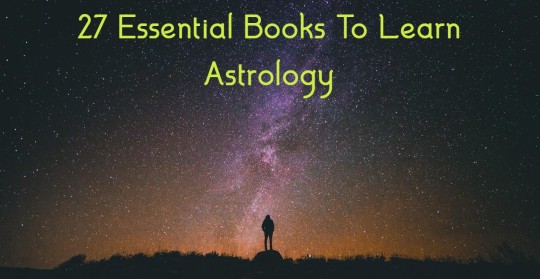
few people have come to me asking for recommended reading regarding astrology, and my answer is constantly changing, as it really depends on your level of knowledge. So here I’m going to share a few of my favorites off my Astrology bookshelves (yes, I have more than one shelf dedicated to astrology). This is a guide for the self-made, self-taught astrologer! - Our Astrologer, Cosmic Love
1.
For Beginners! Learn this name. Linda Goodman. This woman was my introduction to astrology. I read her book, Sun Signs, when I was 8 years old and it hooked me. This book came out in 1968 and was the first book on astrology to reach the New York Times Best-Seller list. Her writing is very clear to complete beginners, and entertaining to read even for more experienced astrology students. Her writing style reminded me of my grandmother, who gave me the book, so it was a very familiar-feeling and easy-to-read book.
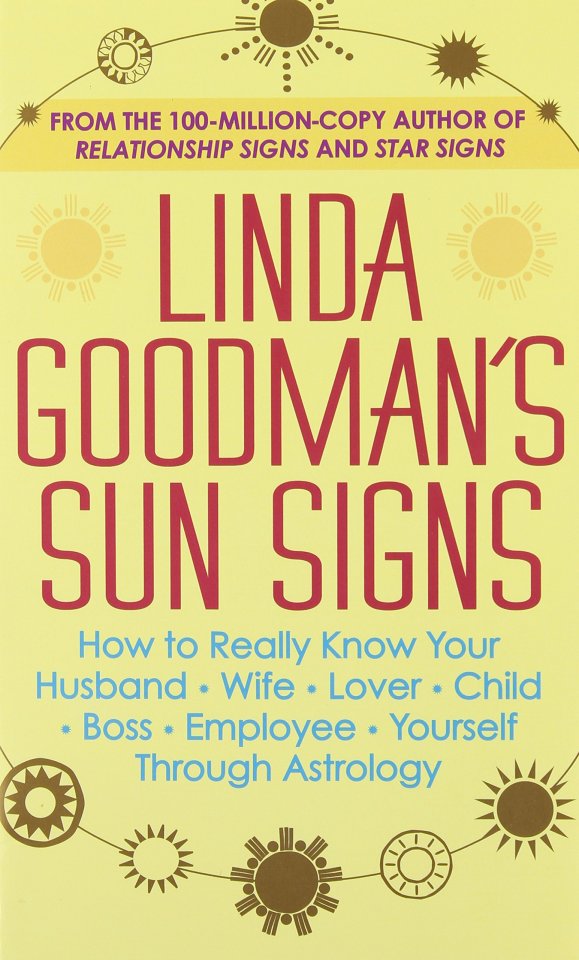
2.
Many of you will recognize the name “Llewellyn” if you’re involved in the metaphysical or magickal community in any way. They have a great introductory book on astrology, called Llewellyn’s Complete Book of Astrology: The Easy Way To Learn Astrology. It is a good resource for anyone learning astrology, and will give you a decent grasp of the basic factors involved in a chart.

3.
Another great resource for any astrologer looking to learn is Astrology: Understanding The Birth Chart by Kevin Burk. This book has a lot of very useful information and is an excellent tool, especially for those interested in a more classical approach to astrology. This book is aimed less at modern astrology, and more at the carefully calculated science that ancient astrologers practiced in Greece.

4.
One of my personal favorite textbook-like astrology books is A Spiritual Approach to Astrology, by Myrna Lofthus. This is an incredible book with a whole load of information useful to any level astrologer. It even includes a spiritual view on aspects and placements. This book dives into overviews of the planets, signs and houses as well as aspects from a karmic and spiritual perspective. If you’re looking for soul development, this is your astrology bible.

5.
I found this next one at a garage sale one day for $1 and just had to call it destiny. The Compleat Astrologer, by Derek & Julia Parker, was published in 1971, and was such a great find! It’s a beautifully illustrated collector’s book with lots of good information for the beginning astrologer. It goes through the signs one by one and includes a historical timeline of astrology and “The Astrological Ages of Man,” which the history buff inside me finds incredibly fascinating! Maybe I’ll do a blog post on astrological ages of man soon…
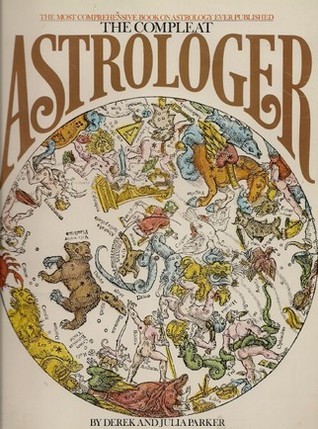
6.
One of my more recent favorites, The Astrology of Fate by Liz Greene, presents astrology from a somewhat classical perspective, yet also slightly modern in her psychological analysis. She uses Greek myths and ancient archetypes to describe the patterns of the planets involved in major life events and makes some very interesting connections! This book also gives many examples and may use technical jargon, so I recommend this book for after you’ve read the previous books listed.
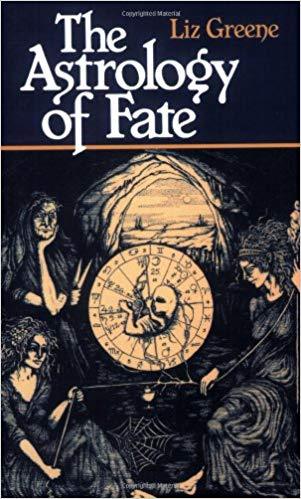
7.
I personally did not have as much interest in this book, but it is a good beginner resource, so I feel obligated to list it here. The Inner Sky by Steven Forrest was recommended to me by a friend years ago, and I didn’t connect very well with his writing style, but he does have great information here. Steven Forrest also has a whole series of astrology books for different levels of learning, so there is something for everyone with his work.

8.
An excellent book for anyone struggling to understand the concept of the houses and their themes, The Twelve Houses by Howard Sasportas is a wonderfully informative book specifically about the houses and the planets throughout the houses. This has some great information on aspect patterns involving houses as well.
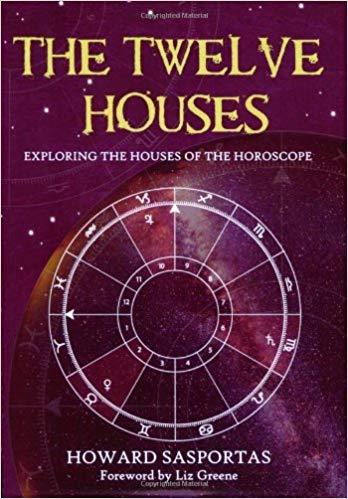
9, 10, 11.
There is a series of astrology handbooks by Frances Sakoian and Louis S. Acker, all of them very good resources. First, there’s The Astrologer’s Handbook, which focuses mainly on natal chart interpretation. The next one I would look into is Predictive Astrology, which mainly focuses on the meanings of transits. Then there’s another book on reading synastry charts (relationship astrology) called The Astrology of Human Relationships.
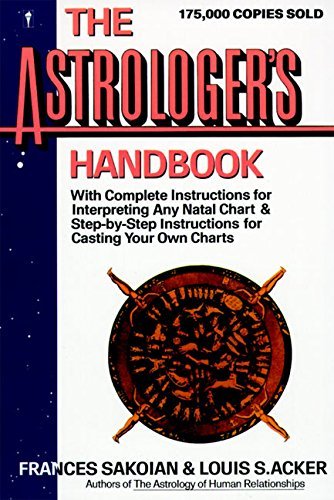
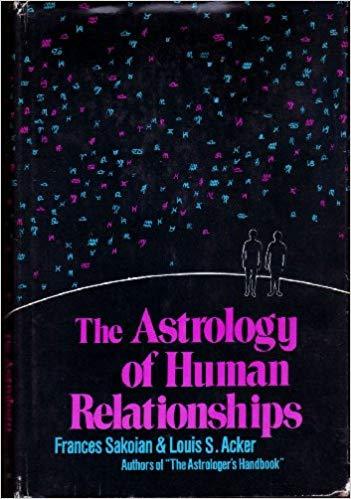
12.
If you’re interested in learning specifically about the ancient Hellenistic tradition of astrology, this list would not be complete without Hellenistic Astrology: The Study of Fate and Fortune by Chris Brennan. This book is a textbook for the ancient Hellenistic way of learning astrology, complete with chart examples and analyses. Chris Brennan offers astrology courses on his website as well and is the host of The Astrology Podcast.
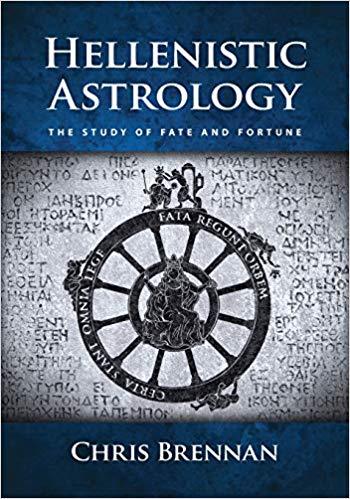
13.
Another one, Llewellyn’s Complete Book of Predictive Astrology: The Easy Way To Predict Your Future, is a good resource for beginners of predictive work. It has a lot of information and great example charts to help grasp confusing concepts.

14.
Another great book is Predictive Astrology: The Eagle And The Lark by Bernadette Brady. This one has a huge amount of information stuffed into such a tiny package. It includes descriptions of the planets, signs and aspects and how they translate to predictive work. It also includes transits and progressions, as well as time maps, transit grids, and how to use them all.
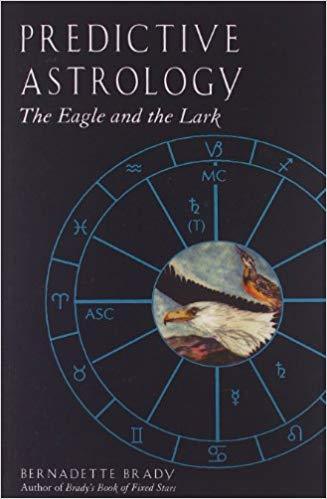
15.
One book I’ve worn out with predictive astrology is Planets in Solar Returns: Yearly Cycles of Transformation and Growth by Mary Fortier Shea. This book is specifically written for solar return charts, but has some very helpful information on how to translate a solar return into something that makes sense. This book includes placements as well as aspects.
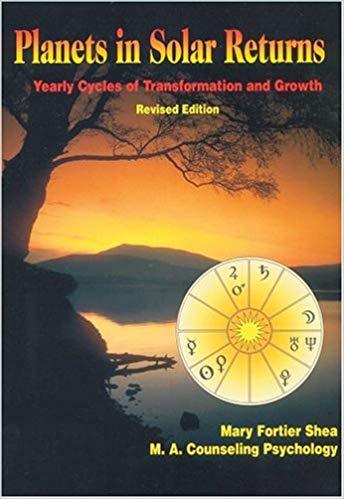
16.
Another great book on solar return predictions is The New Solar Return Book of Prediction by Raymond A. Merriman. This book goes into all kinds of detail regarding solar return charts and how to interpret them.
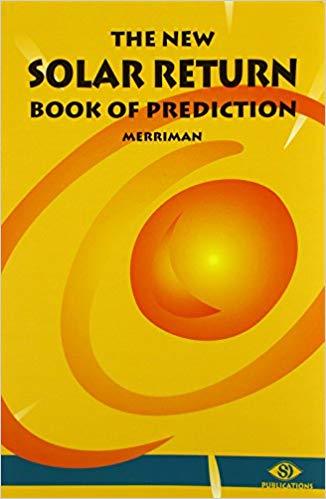
17.
For a great guide book on transits and progressions to natal planets and points, look for Roadmap To Your Future by Bernie Ashman. It contains symbolism of all of the planets, example charts, as well as a description of all of the transits and progressions.
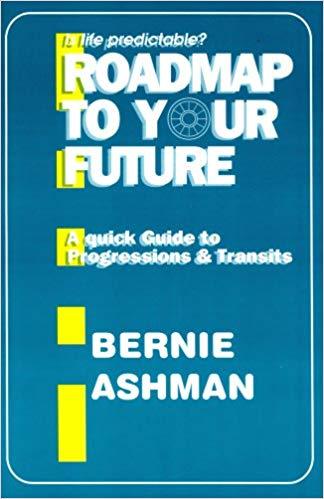
18, 19.
If you’re interested more in Vedic astrology, check out volumes 1 and 2 of Brihat Parasara Hora Sastra: A Compendium in Vedic Astrology. This massive collection of knowledge may be a little advanced for those just starting in astrology, but if you’re already familiar with the basics of Vedic astrology, go ahead and give it a shot!


20.
For people interested in predicting events with astrology, I have a few books that have helped me! First, Predicting Events With Astrology by Celeste Teal. This book is textbook-like and very informative regarding predictive astrology. It goes over using decans as well, which is very important in getting specific information from a chart.
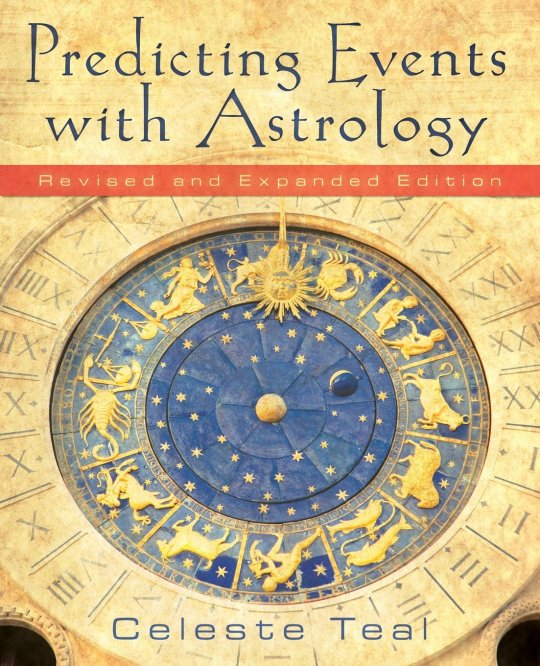
21.
For those of you interested in a karmic approach to astrology, Astrology, Karma & Transformation: The Inner Dimensions of the Birth Chart by Stephen Arroyo is a great informative read, and includes the karmic ideas of the outer planets and their transits. Also, any and all of the Karmic Astrology series by Martin Schulman. I still haven’t been able to get all of this collection, but I have a few and they’ve all been quite interesting to read.

22, 23.
For anyone interested in the complex world of medical astrology, I have two books to recommend. First, Your Health in Your Horoscope: Introduction to Medical Astrology by Stefan Stenudd. This book is a great introduction, as it says in the title, but doesn’t get into extensive medical correspondences and specifics. I just ordered The Encyclopedia of Medical Astrology by Howard Leslie Cornell, and I’m so excited to see what information it holds for me!
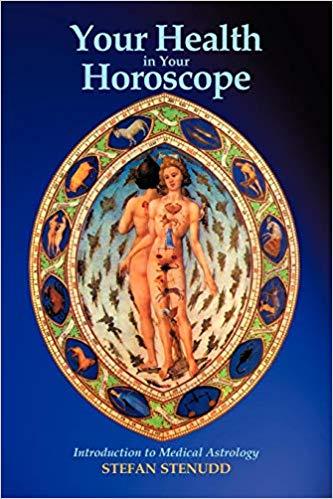

24.
Anyone who likes lists and textbook learning will love The Rulership Book by Rex E. Bills. This book is essentially a book of lists relating to astrology. It includes correspondence lists for each sign, planet and house, as well as a “dictionary” in the beginning to look up almost anything you can think of. I use this book ALL the time when writing my articles as well as for reference sometimes when I’m blocked reading a chart. I highly recommend this one; I feel it’s essential for any astrologer to have.
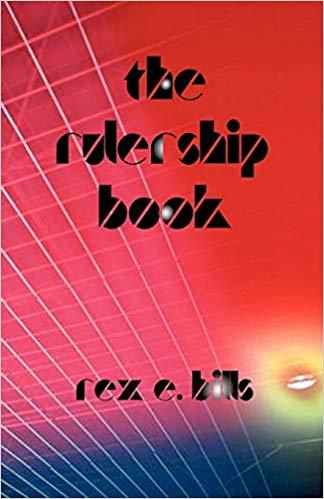
25.
For tarot readers out there, I just bought a book called Tarot and Astrology: Enhance Your Readings With The Wisdom Of the Zodiac by Corrine Kenner. This book is excellent for those with an understanding of tarot who are trying to learn astrology to help their readings. It has tables for reference as well as corresponding cards for each sign and planet placement. Very useful book already and I’ve barely even gotten a chance to read through it yet!

26.
Another book I just bought and am already enjoying is Pam Gregory’s You Don’t Really Believe in Astrology, Do You? I really love a good astrology book that gets technical with things. Pam Gregory is someone I’ve already been following on YouTube and online, and now I’m so excited to be reading her book!
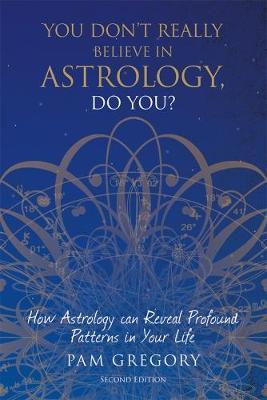
27.
For anyone looking for information on working with the Moon’s timing, Living By The Moon: A Practical Guide for Choosing the Right Time by Ute York is an excellent addition to your library! A must-have, in fact. This book packs all kinds of lunar information into a small package and isn’t astrologically complex at all, so any level of astrologer can use it!

There are a few more on my shelf that are great books, too, but I think this is enough for a good, well-rounded reading list. I hope this list will be a helpful tool for your journey of self-discovery and healing, and I hope that you continue to learn the path of the stars!
Please consider supporting our astrologer by tipping her here!
#witchblr#witch#witchcraft#witches of color#witches of tumblr#wiccablr#wicca#wiccan#astrology#wiccans of color#wiccans of tumblr#pagan#paganism#pagans of color#pagans of tumblr#occult#new age#spells#books
226 notes
·
View notes
Photo

REVIEW
The Complete Grimoire by Lidia Pradas
Magickal Practices and Spells for Awakening Your Inner Witch
Excellent introduction to Magick, Wicca and Witchcraft ~ I found the book one I would love to have on my bookshelf to refer to or to gift to those newly interested in this way of life. Why? Because it was easy to understand with just enough information for a novice without being too much.
What I liked:
* The choice of information
* The writing
* Illustrations
* Charts
* Terms with definitions
* Simple succinct important items one should know
* Cautions
* Inclusiveness and acceptance of all paths
* The variety of information shared
* Emphasis on preparation and intention
* The warm way I felt while reading and when I finished
* Everything
What I did not like? Can’t think of anything at all that I did not like.
Did I enjoy this book? Yes
Would I buy it for myself or someone else? Definitely
Thank you to NetGalley and Quarto Group ~ Fair Winds Press for the ARC – This is my honest review.
5 Stars
BLURB
A grimoire is a witch's handbook filled with all the magickal information, rituals, and practices that a witch uses during their lifetime—a key tool of their craft. Written by Lidia Pradas, the creator of the beloved Instagram handle Wiccan Tips, The Complete Grimoire is a magickal beginner's guide to witchcraft practices and knowledge.
Elegantly designed, featuring a gold foil–embossed cover and beautiful illustrations, and written in Wiccan Tips' trademark concise and practical style, The Complete Grimoire presents the key pillars of witchcraft, including:
Procuring the proper tools and setting up an altar
Harnessing your spells and magick
Sabbats and the Wheel of the Year
How to safely work with deities and spirits
You'll also learn fundamental spells and rituals, such as casting a circle, creating a sigil, and making moon water.
Lidia is a reassuring and trusted guide on your witchcraft journey, addressing key questions and debunking common misconceptions. The Complete Grimoire is an informative, accurate resource the newly initiated and experienced witch alike can use in their daily craft.
#Lidia Pradas#Quarto Publishing Group - Fair Winds Press#NetGalley#Religion#Spirituality#magic the gathering#Witchcraft#Divination#Wicca
3 notes
·
View notes
Note
14 and 17 of your asks! :)
Hey there! Thanks for the ask!
Little warning, this might be long. I like to talk...
#14: Name one tip for a newbie witch
Explore everything, but find a niche.
That might sound a bit counter-intuitive at first, but let me explain.
I think it’s best, especially as a newbie witch, to explore a bunch of different types of magick! Yes, I know that baby witches really want to find “what type of witch they are” and find their community within the witchcraft community, but don’t forget that there is so many different ways to practice!
I think the more you explore, the more you will find what you truly like.
And then that's when you should choose a niche. Some witches choose 1-2 types of magick they practice the most, others 3-4 or even more.
By choosing a niche, you are letting yourself become an expert in that particular type of magick. (oh, and yes, you can practice other types of magick, too)
For example, lets say you already explored a bunch of magickal spells, techniques, and practices and have decided to use herbal magick - (or go even further and choose healing herbal magick - or something like sigil magick. That simply means that if you found yourself in a situation and needed to do a spell - and really needed it to work - you’ll most likely use herbal or sigil magick to get the job done.
That’s because, now that you are more experienced in that area, chances of your herbal or sigil spell working is much higher than if you did, say, knot magick for the first time.
Does that mean your knot spell won’t work? It might.
Does that mean your herbal or sigil spell is guaranteed to work? Of course not.
It just means your changing the odds by advancing your magick.
But you can also be a generalist, and that’s ok, too!
#17: Do you have any witchcraft books that you recommend?
I’m going to say something that might be a ~little~ out of the ordinary.
For the first several years of practicing magick, I didn’t really read witchcraft-related books.
To be fair, I think magick kind of found me because it turns out I was practicing before realizing what it was. (No, I’m not special - lots of people did, too. You probably even did as a child!). And when I did my first spell, I didn’t even question it. I knew it was going to work - I just believed. It came natural to me, at the time.
At first, my lack of reading material wasn’t a conscious choice. I just did spells here and there, and like most witches I would sometimes read up on magick-related blogs. But when it came to research, I liked doing things my own way.
For example, whenever I had a question about something, I typically liked to learn from experience. Experiment with magick (I felt like a witchy scientist!). I would run experiments or do spells and observe the results, then add in or substract several variables, run the experiment again, then observe the results. It was how I would learn what worked, what didn’t, what was necessary, and what was needed.
It was also how I learned how to make spells. What ingredients made the spell stronger? What ingredients might cancel each other out? How can I do spells when I have trouble concentrating, etc? How can I make it easier, but still keep the results? Etc.
I learned through experience (and I recommend it for everyone).
But I also know that this method isn’t for everyone. But also keep in mind, I don’t have a lot of recommendations for this very reason! I’m also not a wiccan, and a lot of beginner witchcraft books is Wicca.
But, here are some recommendations regarding spellcasting or something similar:
My guide on creating your own book of shadows (with spells included)
My guide on how to create, charge, and activate a spell
365 Ways to Raise your Frequency by Melissa Alvarez
Herbal Remedies Handbook by Andrew Chevallier
Ask your Guides by Sonia Choquette
Angels for everyday living by Jacky Newcomb
Discover your psychic powers by Tara Ward
1001 Spells by Cassandra Eason
I also am going to release a ONGOING online Book of Shadows that I will be constantly adding to. If you are interested, join my email list (free bundle included - book of shadows guide, create a spell guide, and wish manifestation ritual) or grab one of my guides and I’ll email you when it’s released. OR, simply pay attention to my blog (myeclecticwitchylife.tumblr.com) or my other blog (mywitchylife.com)!
13 notes
·
View notes
Text
A Brief History of Gladstone
I'm going to break some of my own rules here.
Normally I don't talk too much about myself as an individual—mostly out of paranoia, but also because it's less relevant to the material I usually discuss.
The exceptions are the Ask Games, of which I tend to enjoy interacting with you more than talking about myself.
At any rate, what follows is a brief history of who I am.
I'll skip over most of the details and just say that I'm Mexican-American. I've spent most of my life on the United States East Coast, with brief stints in Germany here and there.
I've always been into magic of some kind or another. I mentioned in an earlier post that one of the first books I remember owning is Wizardology. The little fortune deck it came with still brings me such joy and nostalgia.
I began seriously practicing magic when I discovered Buckland's Complete Book of Witchcraft at about 12 years old. I practiced in secret, given that my mother would react...strongly if she knew. It was during this time that I took the magical name Gladstone.
I studied Wicca and Witchcraft until I was about 18. In college I discovered Modern Magick (notice the trend with the big blue books?) and began studying ceremonial magic.
Shortly after, I discovered Liber Null and Psychonaut, effectively beginning my studies in chaos magic. I practiced both ceremonial and chaos magics seriously until around 23 years old.
At that time, my wife and I moved to Germany so I could study abroad. During that period, I briefly studied the Left Hand Path and adjacent schools of magic, but never dove deeply into any of it.
Still 23, I returned back to the United States and resumed training in Wicca and chaos magic. I also picked up a copy of The Druidry Handbook and began studying Druidry.
However, having been changed for the worse by my studies abroad, I struggled to adjust back to normal life without copious use of magic.
I gained a lot through this use; in fact, I gained just about everything I could want in my life at that time. But my abuse of magic eventually took its toll.
At 25 I had a complete mental break. I gave up everything—my religion, my magic, even all my journals. All my materials went into a box and collected dust in my closet for months. That was, until I needed a new job.
I built the ritual quickly, but made sure to remain firmly within the territories of Wicca and religious Witchcraft. It worked really well—I was back on my feet in no time, and I'm forever grateful for that.
But I was warned in a dream shortly after: find a worthy path, or you'll land back at rock bottom.
So I did. I created this blog, discovered all of you guys, and here we are. At the time of this writing, I am 26. I am a polytheist, occultist, and magician.
Today I am forging my own path. It's looking so far like a form of ritual magic, distinct from—but firmly embedded within—my larger religious worldview. I study all the paths I can, because each one contains something I can learn from, adapt, and use to help others.
That's pretty much it, so far. Hopefully I'll continue to learn and grow.
Thanks for reading. Blessed be~
2 notes
·
View notes
Note
If you're still taking dialogue prompts... "I'll tell you, but you have to promise not to be mad." and then later "Hey, you promised!"
(I set this in the same universe of “Love You All, Die For This”, but in the middle space before they move onto Watford’s campus.)
There’s certain words that you don’t particularly like to hear after you have kids.
And while yes, there’s always the general “I’d never want to hear my child is sick and/or hurt”, but that’s usually a given. You don’t need to have a handbook to tell you that that’s something you’re ready to not hear.
But there’s certain words and phrases that, once you’ve got kids, makes the hair on your neck stand up. Like a simple, long “Uh-oh” is one to many uh-ohs for an entire life (because now we’re one goldfish short and a lesson about death down for a toddler). There’s always the classic “What’s this?” from a room away, and, of course, the worst of all. The “Don’t be mad”.
The “Don’t be mad” is most likely the worst, because it usually isn’t from your kid (until they’re a bit older, and when they’re older, it’s worse because either it’s something incredibly embarrassing for them, or something incredibly embarrassing for you). No, the “Don’t be mad” can come from your partner.
Which, given I’m married to Simon bloody Snow, I set my “Don’t be mad” bar a bit high.
And of course he hits that bar every single fucking time.
Sometimes, it’s upfront. Like a casual side mention that he gave The Sword of Mages to our son to try to scare the cruel neighbor boys shitless, or when he mentioned that he drew Simon with his wings and tail in daycare, and me with my fangs out (that was an interesting visit to the care office, using “Seeing is believing” on the employees while looking like Normals so they just laughed and said it was Oliver’s overactive imagination). But, the times like these when Simon’s expression is half haunted with guilt, half on-edge makes me even more nervous for what could come.
“What happened?” I ask, easing into the seat beside him on the sofa. He mutes the telly, staring at the screen for a minute longer as he reads along with the subtitles. It’s just a late-night weather report for tomorrow.
“It’s nothing. Don’t worry about it.”
The house is quiet. Not unnervingly quiet, but just quiet. The usual. Simon and I take turns putting Oliver to bed--it goes by books. We swap out after we finish a story and he picks up a new one (he’s halfway through The Lightning Thief currently). This story’s Simon’s, so I went out to hunt in the meantime, stepping off deeper into our property and draining a deer.
Suffice to say, I’m feeling a bit more warm than usual, and Snow’s seeming a bit more cold. Reserved, more-so. Turned in.
“I’m going to worry about it, love. Don’t know if I have the privilege of saying ‘Not my problem’ to your qualms now.”
He shifts, eyes still on the screen as his head settles onto my shoulder. “I’ll tell you,” he says softly, “but you have to promise not to be mad.”
The sentence settles like lead in my stomach. Just the very phrase is usually enough to turn the nervous cogs in my brain at a whirling pace, making me nearly sick. Especially in this context. Especially when he’s sad.
“I promise,” I say hesitantly, nudging an arm around his waist and taking hold of his side. He melts just slightly, still a bit rigid in my grasp.
He nods, then closes his eyes, finding the proper words first. “I told Oliver more about The World of Mages, and he’d asked about my magic and your family and...”
“My family?” I must say it in a bit more of a bite than intended, because it makes him jolt a bit.
“Hey, you promised!” Simon pulls from my side, looking at me properly as his hands worry around the cuffs of his jumper. “It’s hard for me! I panicked, and I just can’t lie to him.”
“It isn’t a lie, it’s... mitigating the truth.”
“It’s avoiding the conversation, Baz.”
I feel my jaw clench, then loosen, eyes falling onto the floor. After a moment of discomforting silence, he continues.
“He wants to be included, love. He knows there’s people like you out there--”
“People like us.”
He stares at me hard enough to make me stare back, swallowing the nervous lump settled into my throat.
“People like you. I’m not like you anymore.”
I want to argue. It’s something we’ve had a talk about in the past--he says he’s no longer really in the World of Mages, but I try to protest and suggest that he’s technically still recognized in it and allowed into events and locations that his magic previously let him into (regardless as to if it’s out of pity now). I know the fight isn’t worth it now.
He sighs, then keeps on. “Anyway. He... he knows, Baz. He knows he’s not alone, and he wants what other mages had growing up.”
“What? The bloody club?”
“Yeah, maybe.” His hands find mine. “I don’t know. Something.”
I exhale, eyes falling shut as he scoots closer. “Do you think I particularly liked the magicks-centric childhood I got.”
“I think you don’t see it as a privilege,” he mumbles. “A privilege that he has, and can embrace.”
I open my eyes. “Why?”
“I don’t know, Baz. Maybe because I didn’t grow up with Mage’s clubs and didn’t get to feel the general ambiance of magic until Watford.”
“He gets plenty of magic at home! I feel like I spell frequently enough for him to follow.”
“That’s not the point!” He throws his hands up, face starting to grow a bit redder. “You’re not listening! Listen to me, for fucks sake!”
“What? What do you want me to say?”
“I want you to agree with me! Just, say you’ll let him socialize with Mages, unstead of his half-Mage half-Normal household!”
I stop, swallowing hard as I stare at him. “It’s about you not having enough magic, right?”
“No.” He glares, hands lowering. “Why do you always think that?”
“Because you bring it up.”
His lips twitch as he huffs, arms crossing and tail flicking wildly behind him. “I’m allowed to feel guilty for not providing that for him,” he hisses. “But this isn’t that. It’s him wanting to be part of his community, and we’re not giving him that.”
“Well, what do you want done about that? We throw him into Watford as the youngest ever first year? Never thought they’d let youngsters back on campus.”
He glares, and it hits me. The renovation. The delay of that (which, in reality, is out of our grasp. It takes a while to rebuild an old barn into a functioning house, especially given it smells strongly of goat). He just wants to be back at Watford.
My shoulders fall, eyes meeting his shakily as I exhale. “We’ll find something,” I say softly. “We’ll take him somewhere. Go to something. Can’t promise it’ll be easy, but we’ll do it.”
He nods shortly, gaze fallings onto my lap.
“And...” I add, “I’ll call about the renovations. I know it’s off schedule, and I damn well know you’re an impatient bastard, but it’s still in the works, love. It’s happening.”
He loosens, hands properly slipping back against mine as he exhales. “Yeah. Okay, yes. Yeah. Thank you.”
I shift a bit closer, rubbing his wrists as I nod. “Anything else of pressing matter? Got to yell at me some more?”
His nose wrinkles a bit, a guilty smile wearing onto his face as he tries to shrug it away. “Not coming to mind.”
“Good.” I kiss his cheek softly. “Can we call this day quits then and just go to sleep this off?”
He nods, sighing softly and giving me a proper kiss back.
#anï rambles#asks#anon#ficlet#fanfic#fic#mine#i think this is the last quotes fic i'll write#so thank you everyone who sent me stuff!!!
41 notes
·
View notes
Photo
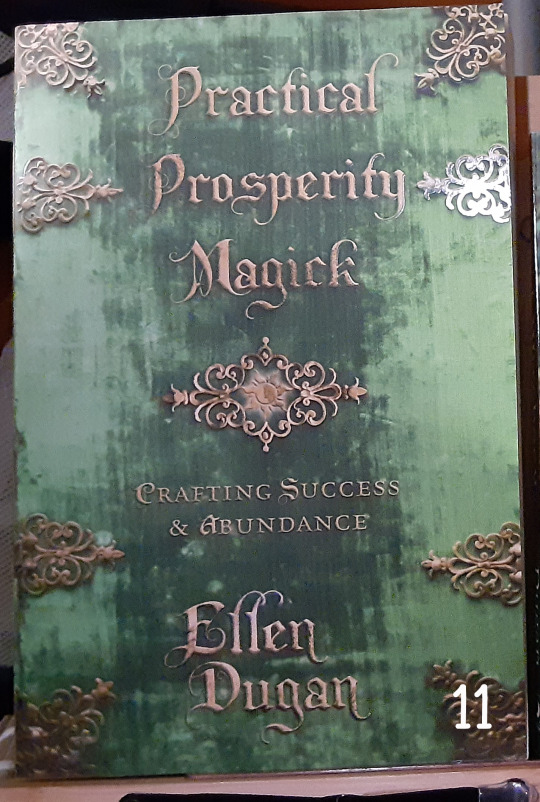
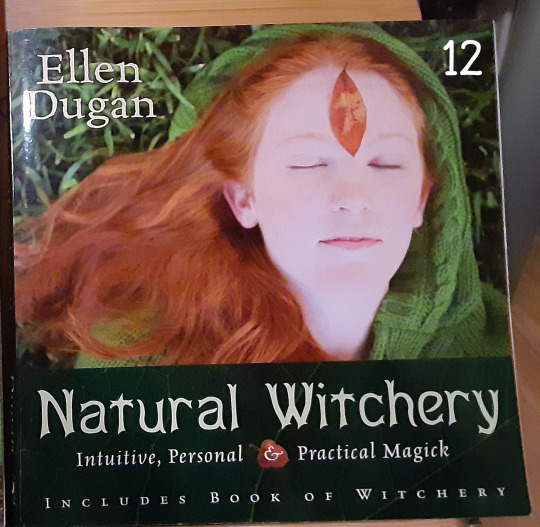


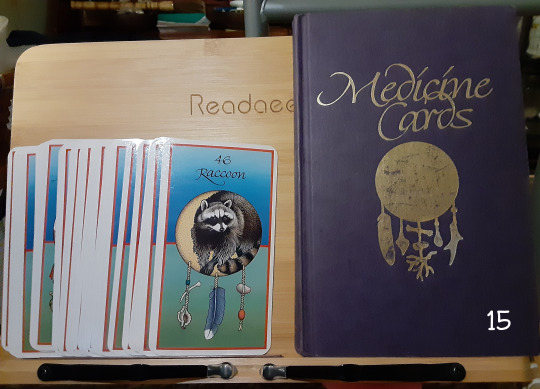
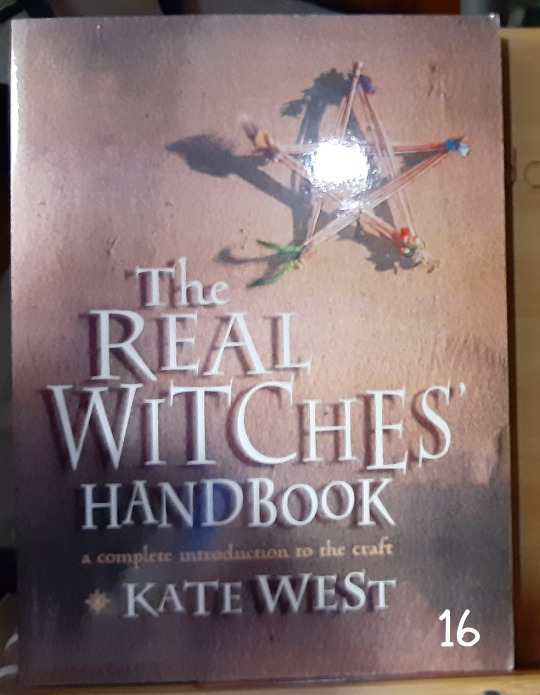




BOOK AND NOTEBOOK SALE (POST TWO)
Hello, fellow witches and pagans. I am in a tiny spot of needing some funds, and as it so happens, I also have witchy books (and some blank notebooks) I’ve bought over the years that I never really read or used.
All of my prices include shipping (thus some won’t make me much) and I checked Amazon to compare the prices for those books I could find. I am looking for monetary payment only, no trades, and can take Venmo. If you don’t have Venmo, Discord me at QueenVulture#7849 and we can discuss other alternatives.
First come first served, and book will not be shipped until I see the transaction. You’ll be provided a UPS (not USPS they suck) tracking number when a book(s) ships. Pretty sure they don’t charge extra for tracking. I hope not.
Here’s the list of books for List 2:
11) Prosperity Magick by Ellen Dugan - $10 (retail $14 + shipping)
12) Natural Witchery by Ellen Dugan - $10 ($14 + shipping)
13) Animal Spirit Guides by Chris Luttichau - $10 (retail $83???? + shipping)
14) Plants of Power by Alfred Savinelli - $5 (retail $6 +shipping)
15) Medicine Cards PLUS cards by Jamie Sams - $25 for both (retail $26 book only, $35 cards only, ~$60 + shipping both)
16) The Real Witches Handbook by Kate West - $10 (retail $13 + shipping)
17) Earth, Air, Fire, and Water by Scott Cunningham - $8 (retail $11 + shipping)
18) Wicca for One by Raymond Buckland - $9 (retail $11 + shipping)
19) The Wiccan Way by Rae Beth - $10 (retail $15 + shipping)
20) The Compendium of Magical Beasts by Dr. Veronica Wigberht-Blackwater/Melissa Brinks - $12 (retail $16, including shipping) non-magick book
#wicca#wiccan#witch#witchcraft#pagan#paganism#journal#journal for sale#books for sale#witch books#wiccan books#pagan books#book of shadows#grimoire#wicca books#magic book
5 notes
·
View notes
Text
Several months ago a sales coordinator from a publishing group reached out to me on behalf of an author asking if I would like to receive a review copy of a witchcraft book. I delayed responding but when I did she sent the book promptly.
It seemed like another "embrace your inner witch" or "witchcraft as self-care" or "witches are just women who don't do what they are told" books. They seems really popular right now. I guess all publishing houses need one no matter if they have a fact checker or not, we'll get to that later.
The Witchcraft Handbook: Unleash Your Magickal Powers to Create the Life You Want
By Midia star
I got the book today. It's really beautiful! It's got a moon and a crow on it. If you've been following my blog for awhile you will know my affinity for my neighborhood corvids. The inside is similarly beautiful. It's full color with beautiful water color illustrations.

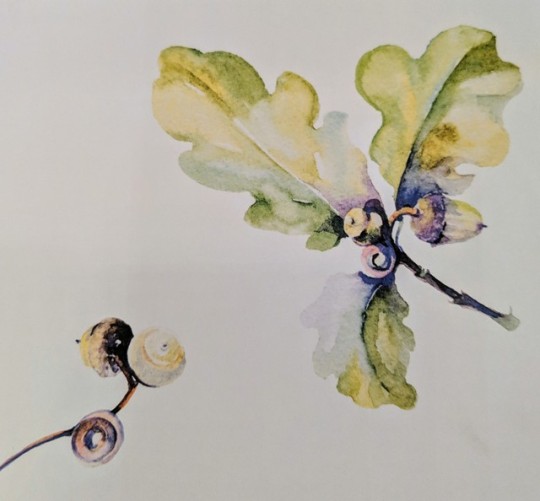
Then I opened up to the first page and the first two sentences made me want to scream and throw the book across the room:
"Witchcraft is the practical side of the Wiccan religion. This religion has been around long before Christianity and it bears little resemblance to most other religions followed today"

Now, I could have expected this sort of ill-informed nonsense from a book published in the 90s, but this book was published this year?! Do they not have fact checkers at Ilex press? Wicca is a specific pagan religion that was started in the middle of last century by a guy named Gerald Gardner and filtered through Golden Dawn and Thelma and a questionable sourced experience with a coven in New Forest. It's not that hard to track down the info.
Honestly, just a short trip to Wikipedia could have sorted out this embarrassment.
Also, I'm an agnostic secular witch, I'm not even pagan, but I'll bet that some deeply devoted actual Wiccans would be upset by the idea of just taking whatever "practical" part you want out of their religion.
There are much better ways this could have been addressed and you didn't even have to bring Wicca into it. Witchcraft is a practice that is often a part of pagan religions. However, witchcraft can be a practiced without religion at all. I like to call it secular witchcraft.
We're only still in the first page and the author is saying that Wicca (or possibly witchcraft?) are more a way of life than anything else and that it is nature based, they used magick (with the K, ugh), say they worship gods, and that those deities help them. I can refute each of those things because there are many different kinds of witches.
At this point I started flipping through the rest of the book. It's mostly a spell book, not so much a handbook. There are sections of styles of spells, can you guess what the first one is? Come on guess? What do you think a publisher would want at the front of a witchcraft book to sell it? Love and sex spells, of course.
But before we get there, there's this whole "the power of women" with the tired trope of the village 'wise woman', midwife, healer, etc. Blah, blah, blah modern witches are bad ass powerful women.
It's a plus that this book isn't trying to sell you on needing a bunch of magic(k)al tools and relies on things you can find at a supermarket. I mean, that's great, but some tools are important in some traditions. It could have been nice to discuss that.
Then there's a part about two simple rules. Can you guess what they are? The Threefold Law except it's not only a threefold law, but sometimes it's seven? I don't know, there was no explanation. Also, The Wiccan Reed, yes "Reed", not "Rede".
Ahahaha! This book already at page 10. I can't.
Again, Wicca is a specific pagan religion. You can be a witch without being Wiccan or even pagan. They Wiccan Rede is for Wiccans and I'm not Wiccan so it does not fit into my witchcraft practice. When will we ever get past the Rede thumper policing the behavior of other witches?!
So, there's a section about "how and why does magic(k) work?" except a few pages ago they said that the goddess makes it happen and here the words "without going into too much detail, it's a combination of things." vague allusions to not using all the power within us, and an incredibly simplistic explanation of sympathetic magic(k)
So, now we are on to what the moon phases look like but no detailed info about what spells to cast when besides a simple if you want something positive do it on a full moon.
Now we have the section of love and sex spells with the reminder to be thoughtful about it. Spells to attract a mate, or commitment, flirting, to spice up your sex life, rekindle passions, etc.
Then, right after the section of spells is a section on the elements. I realized that these sections of things others consider foundations are just sort of spliced in random places after groups of spells. Was it intended to be like this? Did the publisher think all that foundation stuff like moon cycles, the elements, book of shadows, holidays, gemstones, herbs, and things were too scary or complicated for people who just want to cast spells to make money or find love?
The organization of this is a mess. On page 99 starts section 4 for home and family spells where the author states that protection for you home is a great way to start your spellcasting. Sooo, why wasn't the book started here? Why did love spells come first? Why not lay a foundation for a practice so you can build from?
There are 40+ more pages but I'm done. This book was definitely not for me, someone who has built my own practice for 13 years, but I would also not recommend it for beginners either. Some of the spells were interesting and the book is pretty but full of errors and assumptions and just poorly put together.
757 notes
·
View notes
Text
Build Your Own Beginner Witch Kit
So I gave my opinion on the whole Pinrose / Sephora witch kit controversy, but I always want to offer an alternative if you’re actually truly interested in witchcraft but you’re unsure where to beginning.
I am a secular agnostic witch so please keep that in mind when reading my suggestions for a “beginner witch kit” because I am not suggesting anything from any particular religion that utilizes witchcraft or from any particular practice.
This will literally depend on if you’re just interested in studying and practicing witchcraft as a secular practice or if you plan on incorporating it with a religion or learn about a certain culture. I can offer some guidance for those looking to get into secular [mainly european] witchcraft but I’m not gonna be very helpful for those looking to get into something like Wicca. Mainly because Wicca [and other religions that involve witchcraft] has it’s own “rules,” which I do not follow lol.
These, again just to make myself perfectly clear, suggestions are the bare basics. This is not intended to cover every path, every practice or every religion. If you’re looking to get into a specific practice (based on your ethnicity and heritage, please do the proper reach for that particular practice).
:: THE BASICS ::
Water / Dirt / Rocks | I’m not kidding lol. Go outside and collect from nature. The most valuable tools you’ll probably ever own are gonna most likely be the ones that nature provided for you. Also this stuff is free. And if you’re gonna get a chance to understand your own local natural surroundings. Be sure to look up laws in your local area about collecting animals bones/part (like feathers and teeth). “Herbal Medicine Natural Remedies” is a great starting point for learning herbs. Also “The Green Witch: Your Complete Guide to the Natural Magic of Herbs, Flowers, Essential Oils, and More” is another good book if you’re interested in learning more about herbs in witchcraft.
Pen and Paper | Get a journal. It doesn’t have to be fancy just a $1 notebook will be fine. This isn’t me suggesting you create or start a grimoire but instead, encouraging you to journal about your own personal experiences. A journal with your own thoughts, words and stories is gonna offer you a much deeper insight into your practice [later on] than a notebook of copied and paste information [that’s what books are for lol].
Books about witchcraft | Learn. Learn. Learn. Never stop learning. Never stop reading. I’ve linked a few books with each point to give you a starting place to find the information you need.
:: More Tools & Supplies ::
Candles | Personally I’d suggest white candles, simply because they’re pretty much universally believed to be a reliable substitute for any other color. But other colors I would also suggest to new witches is pink, yellow, green, blue and black. Practical Candleburning Rituals is an okay book to start with if you’re just getting started.
Crystals | Some favorite basics of a lot of witches are clear quartz, amethyst, moonstone, tiger’s eye, and rose quartz. The Crystal Bible is a wonderful starting book (and just a really good book to have on hand).
Incense | Smoke cleansing is much easier and more accessible if you use incense. Usually incense are believed to hold the same properties and association as the herbs/plants/flowers they’re made with. Incense: Crafting and Use of Magickal Scents
Mortar and Pestle | I personally feel like this is an important tool for any witch of any practice. Making incense, powders, herbal blends etc.
Fireproof Bowl | Cauldrons aren’t just for mixing witches brew [lol] but they’re great for burning things as well. That being said you don’t need a cauldron. Any fireproof bowl will work too.
:: Specific Tools & Supplies ::
Salt | Commonly believed to asbored energies, it’s also great for protection, purifying and healing. x x
Charcoal Discs | If you plan on creating your own powder incense blends or using dried herbs you’re gonna need charcoal discs to burn them. x
:: Other Book Suggestions ::
Please keep in mind that it’s very difficult to find beginner friendly books about witchcraft that aren’t centered around Wicca. Hopefully in the future we’ll have more books about secular witchcraft too.
Everyday Moon Magic: Spells & Rituals for Abundant Living
Everyday Sun Magic: Spells & Rituals for Radiant Living
The Complete Book of Incense, Oils and Brews
Cunningham's Encyclopedia of Magical Herbs
Modern Witchcraft and Magic for Beginners: A Guide to Traditional and Contemporary Paths, with Magical Techniques for the Beginner Witch
A Year and a Day of Everyday Witchcraft: 366 Ways to Witchify Your Life
The Psychic's Handbook: Your Essential Guide to Psycho-Spiritual Energies [for those interested in this aspect of spirituality and witchcraft]
I’m sure that once you get into [if you get into] a more established practice you’ll be able to easily research more specific tools, supplies and resources.
:: Help Support The Blog ::
Patreon | Ko-fi | Instagram | Youtube | Shop
247 notes
·
View notes
Note
For people who are just starting out, do you have a recommended reading list? Thanks!
PDear Anonymous,
It’s a great question.
There are a ton of ceremonial magic books out there. And there’s a challenge here, too. Although a lot of western-style ceremonial magicians of the last fifty years would have you believe that there’s some sort of unbroken lineage of magical practice that extends back to the Paleozoic Era, the truth is that every program of magical study leads to slightly different places — because, of course, they’re made up of different programs of study and practice.
Ideally, a course of study in ceremonial magic should have four things in it:
1. A practice of meditation
2. A program of ceremonial development (from simple stuff to grander)
3. A system of divination to study and practice
4. Some other stuff.
I’ve tried to characterize the books I’ve listed here by the types of stuff offered and the ground covered. And I’m only listing books of magical development that I myself have worked from beginning to middle (and some to the end, marked with a •• at the end). You’ll see that I have a (probably inordinate) fondness for John Michael Greer, but he’s not the only one.
These books are MANUALS OF PRACTICE. That is, you start at the beginning, and work through the material in order, growing from a novice to someone somewhat more skilled.
John Michael Greer. Learning Ritual Magic, 2004(?) Meditation, Golden Dawn-style ceremonial magic, Tarot, Palace of Memory stuff, and Hebrew. ••
John Michael Greer. Celtic Golden Dawn, 2013. Meditation, Golden Dawn style magic with a Celtic/Welsh bent, Geomancy, Geometry, Alchemy, spirit summoning in the Druidic grade. ••
John Michael Greer. The Druidry Handbook, and the related work The Druid Magic Handbook. Both detail magic and practice in AODA, the Ancient Order of Druids in America. This is a very slow development process, often taking 12+ years to become a fully-operant Druid Adept.
Don Michael Kraig. Modern Magick, 2002(?). Meditation, Golden Dawn style magic, astrological magic and tarot, talisman making. ••
Dolores Ashcroft-Nowicki. Ritual Magic Workbook. 1998. Meditation, Golden Dawn/Servants of the Light-style magic, Tarot, building an actual temple, Astral Projection. ••
Rufus Opus, Seven Spheres. I’m not sure of the date on this one, but it’s a reading and interpretation and meditation of the Corpus Hermeticum, and uses the Johann Trithemius “The Art of Drawing Spirits into Crystals” as the basis of its work. It’s all spirit-summoning, more or less all the time, pretty heavily Christian… and it works quite well. ••
Jason Augustus Newcomb, The New Hermetics. Meditation, Golden Dawn-ish style magic, visualization, talisman making. ••
Raymond Buckland, Buckland’s Complete Book of Witchcraft. Meditation, Wicca-style ritual, herbalism (some), construction of magical tools, ceremonial magic.
Peter J. Carroll, Liber Null & Psychonaut. Chaos Magic, meditation, sigil magic, a bunch of stuff.
Gordon White, The Chaos Protocols. Meditation, chaos magic, economic analysis, Tarot (lite), astrology (lite), working with spirits as diverse as The Headless One, Saint Cyprian and a host of other saints, and some really fantastic takes on how to become an operant magician.
Jason Miller, The Sorcerer’s Secrets. Meditation, ceremonial magic in a western style with elements that look like Buddhist and Tibetan shamanic practices with the serial numbers filed off if you squint hard. Highly workable, highly practical. ••
So, overall, I think my advice amounts to — beg or borrow one of these (don’t steal, most magical authors enchant their publications to be useless to thieves), or more, and do some reading. One of these books is going to tell you, “this is your jam.” And you can leave the others aside for one to three years, while you work through the principal manual you’ve chosen.
If you don’t find these are quite what you’re asking for, though, feel free to ask the question a different way. Maybe what you’re looking for isn’t a MANUAL OF PRACTICE, so much as guides to the philosophy of ceremonial magic… in which case I recommend starting out with Israel Regardie’s The Tree of Life (an illustrated study in magic) (orange cover), which is long and detailed and tedious… but contains enough in it that a careful reader could create a workable magical system from the hints he drops.
75 notes
·
View notes